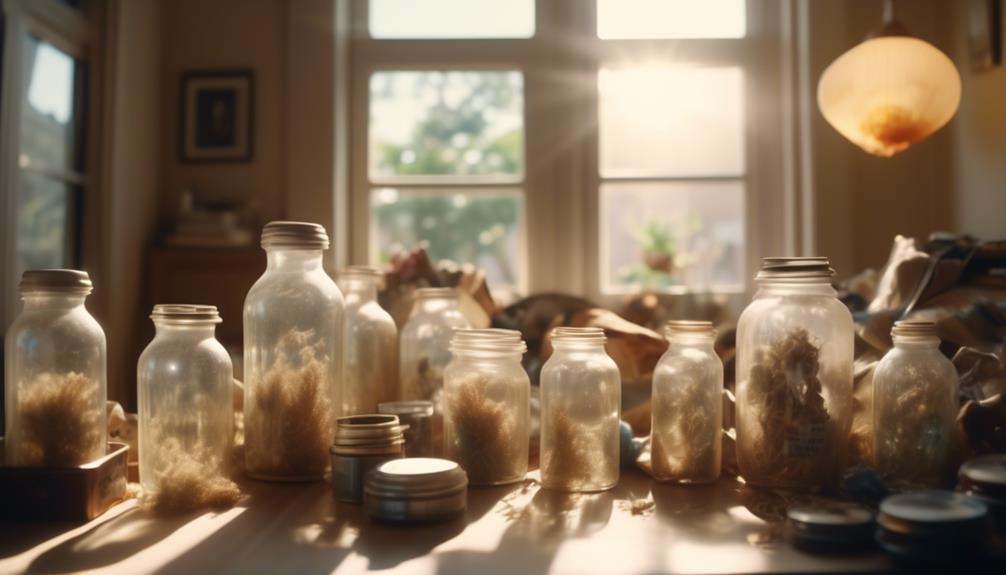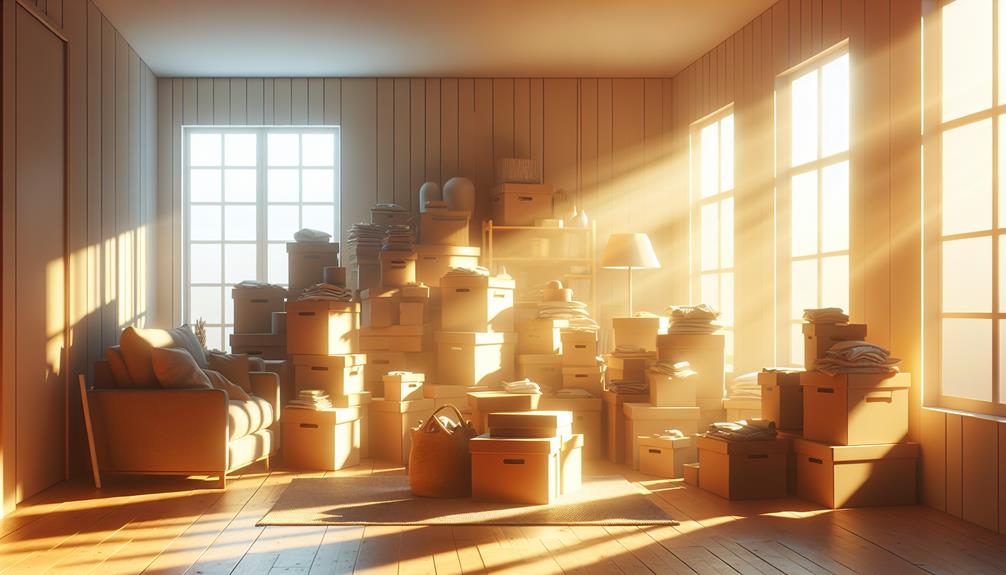Are you aware that an estimated 2-6% of the population struggles with hoarding tendencies? This staggering statistic highlights the prevalence of this issue and the need for effective solutions.
If you've ever wondered how hoarding households can find freedom through decluttering, you're about to discover the answers you've been seeking. In the following discussion, we will explore practical strategies, expert advice, and real-life success stories that will inspire and motivate you to take the first step towards a clutter-free life.
Prepare to unlock the secrets to reclaiming your space and finding inner peace.
Key Takeaways
- Decluttering frequently and in small increments can make the process easier over time.
- Letting go of items from the past and considering how others could use them can help in the decluttering process.
- Decluttering room by room and regularly maintaining a clutter-free home are effective strategies.
- Seeking professional help is recommended for difficult hoarding habits.
Understanding Hoarding Behavior
Understanding hoarding behavior is essential in order to effectively address and support individuals struggling with hoarding tendencies. Hoarding goes beyond just collecting items; it has a profound psychological impact on those affected. By delving into the underlying reasons behind hoarding behavior, we can provide the necessary support and interventions to help individuals overcome these challenges.
One of the long-term benefits of understanding hoarding behavior is being able to develop targeted strategies that address the root causes. This can involve addressing underlying emotional attachments to possessions, working on decision-making skills, and helping individuals develop healthier coping mechanisms. By understanding the psychological impact of hoarding, we can tailor interventions to not only declutter physical spaces but also support individuals in their mental and emotional well-being.
Practical Tips for Decluttering
- Set specific goals: Determine what you want to achieve with your decluttering efforts. This could be clearing out a specific room, getting rid of a certain percentage of items, or creating a more functional space.
- Sort items into categories: Divide your belongings into categories such as keep, donate, sell, and discard. This will help you make decisions about what to keep and what to let go of.
- Make decisions quickly: Avoid getting stuck on individual items. If you're unsure about something, set it aside and come back to it later. Trust your instincts and make decisions swiftly to keep the momentum going.
- Seek support: If decluttering feels overwhelming, enlist the help of a friend or family member. They can provide guidance, encouragement, and an objective perspective.
- Let go of guilt: It's common to feel guilty about letting go of items, especially if they have sentimental value. Remember that the memories associated with an item will always be with you, even if you no longer physically possess it.
- Create a maintenance routine: Once you've decluttered, establish habits to prevent future accumulation of clutter. Regularly assess your belongings and make a conscious effort to only bring new items into your space that serve a purpose or bring you joy.
Strategies for Letting Go of Items

Consider the value and purpose of each item before deciding whether to let go of it. Letting go of sentimental items can be particularly challenging, as they often hold strong emotional attachment. However, it is important to remember that memories reside within us, not within the physical objects themselves. Overcoming emotional attachment can be achieved by finding alternative ways to preserve the memories associated with the item, such as taking photographs or creating a digital scrapbook.
Here are some strategies to help you let go of items:
| Strategies | Benefits |
|---|---|
| Evaluate usefulness | Focus on items you actually use |
| Consider donating | Others could benefit from them |
| Repurpose or upcycle | Give new life to old items |
| Practice gratitude | Acknowledge the item's purpose |
| Create a memory box | Preserve sentimental items |
Room-by-Room Decluttering Guide
Start decluttering your home room by room to create a more organized and stress-free living space.
Here's a simple room-by-room decluttering guide to help you get started:
- Bedrooms: Sort through your clothes, shoes, and accessories, keeping only the items you love and wear frequently. Donate or sell the rest.
- Kitchen: Clear out expired food, duplicate utensils, and unused appliances. Organize your pantry and cabinets for easy access.
- Living room: Remove excess furniture, decor, and electronics. Create designated spaces for items like books, magazines, and remote controls.
Importance of Decluttering for Hoarders

Decluttering is essential for hoarders as it provides a sense of security and reduces long-term stress. Hoarding every little thing can burden and overwhelm individuals, preventing them from enjoying a clutter-free and organized living space. By decluttering, hoarders can create a more manageable environment, allowing them to find things easily and enjoy their space without feeling overwhelmed.
Additionally, possessions aren't substitutes for memories and experiences, and decluttering can help hoarders shift their focus towards more meaningful aspects of life. Seeking professional help is also recommended for difficult hoarding habits, as trained experts can provide guidance, support, and strategies to overcome hoarding tendencies.
Frequently Asked Questions
How Can Hoarding Behavior Affect Relationships With Family and Friends?
Hoarding behavior can strain relationships by impacting emotional well-being and creating a lack of understanding. Support systems for hoarders, such as therapy and education, can help rebuild connections and foster a healthier living environment.
Are There Any Specific Strategies for Decluttering Sentimental Items?
To declutter sentimental items, try these strategies: prioritize what truly holds meaning, repurpose or display them creatively, take photos for digital memories, and consider passing them on to loved ones who will cherish them.
What Are Some Common Challenges Faced by Hoarders When It Comes to Decluttering?
When decluttering, hoarders often face mental health challenges and emotional attachment to their possessions. These can make it difficult to let go of items and can lead to overwhelming feelings.
Can Decluttering Help Improve Mental Health for Individuals With Hoarding Tendencies?
Decluttering can greatly improve your mental health if you have hoarding tendencies. By using effective decluttering techniques and seeking professional intervention, you can experience the benefits of a clutter-free and more organized living space.
How Can Hoarding Behavior Impact Daily Functioning and Overall Quality of Life?
Hoarding behavior can suffocate your daily functioning and quality of life. It weighs you down, trapping you in a cluttered maze. It hinders productivity and takes a toll on your emotional well-being.
Conclusion
In conclusion, by taking small steps to declutter your home, you can find freedom from the overwhelming burden of hoarding.
Imagine the peace and tranquility of a clutter-free living space.
So, why wait any longer? Start your journey towards a more organized and functional environment today.
Ask yourself, are you ready to let go of the clutter and embrace a new sense of freedom?

